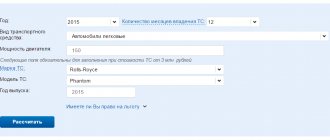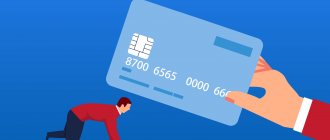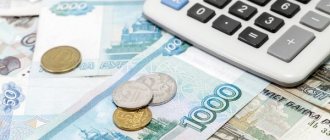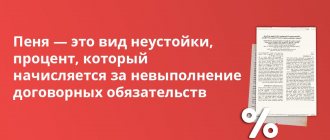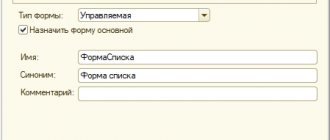The concept of special tax regimes is spelled out in Art. Tax Code of the Russian Federation. They provide for a special procedure for determining the elements of taxation, as well as exemption from the obligation to pay certain taxes and fees. Special tax regimes include:
- taxation system for agricultural producers (UST);
- simplified taxation system (STS);
- taxation system in the form of a single tax on imputed income for certain types of activities (UTII);
- patent tax system (PTS).
What special tax regimes are provided by law?
In accordance with paragraph 2 of Art. 18 of the Tax Code of the Russian Federation, Russian taxpayers can apply, in combinations permitted by law or separately, the following 4 special tax regimes:
- Unified Agricultural Sciences;
- simplified tax system;
- tax payment regime when a company participates in production sharing agreements (PSA);
- PSN.
The specified tax regimes in 2021 are fully relevant and can be chosen in the manner prescribed by law.
The legislator takes perhaps the most conservative approach to the PSA regime: no significant adjustments have been made to the rules governing its application since 2011. An exception is the introduction by order of the Federal Tax Service of Russia dated May 15, 2017 No. ММВ-7-3/ [email protected] of a new income tax declaration under a PSA (note that it replaced the one that had been used for more than 10 years without changes). PSA has the right to be used only by investors - participants in production sharing agreements who conduct searches, exploration and production of mineral raw materials (Clause 1 of Article 346.36 of the Tax Code of the Russian Federation).
Let us consider the main differences between special regimes and the amount of the tax burden in each case.
Who can use special modes
The simplified tax system, UTII and ESH can be used by both legal entities and individual entrepreneurs, but a patent is intended only for entrepreneurs. If the general tax system (OSNO) applies to all taxpayers, then certain criteria must be met to apply special regimes.
Special regimes are aimed mainly at small businesses. Whether a company is classified as a small or micro enterprise depends on a number of parameters: the structure of the authorized capital, the average number of employees, certain indicators (fixed assets, revenue, size of premises, etc.).
simplified tax system
An organization can apply the simplified tax system if the following conditions are met:
- The company is not a budget or government institution, a party to a production sharing agreement, a bank, an insurer, a pawnshop, a professional participant in the securities market, an investment fund or a non-state pension fund.
- The company is not involved in the gambling business, production of excisable goods, or mining.
- The share of participation of other organizations in its authorized capital in the aggregate does not exceed 25%, the accounting residual value of fixed assets does not exceed 100 million rubles.
- The average number of employees per year does not exceed 100 people.
- Income for 9 months of the year preceding the year from which the organization is going to start applying the simplified tax system does not exceed 45 million rubles excluding VAT, taking into account the deflator coefficient, in 2015 - 51.615 million rubles (45 million × 1.147). The total amount of income for each year in which the organization applies the simplified tax system should not exceed 60 million rubles, taking into account the deflator coefficient. For the entire period of application of the simplified tax system in 2015, this is 68.82 million rubles, and during 2016, the revenue of the company (entrepreneur) should not exceed 79.74 million rubles (60 million × 1.329).
Unified agricultural tax
The Unified Agricultural Tax imposes special requirements on the revenue of enterprises: the share of income from the sale of agricultural products in the total income from sales must be at least 70%. At the same time, there are no limits either in terms of revenue or number. An exception is fishing organizations, for which the number of employees should not exceed 300 people.
UTII
When using UTII, unlike the simplified tax system, there are no restrictions on the amount of revenue. But there are other conditions:
- If a company is engaged in retail trade through a store or pavilion, the area of the sales area should not exceed 150 square meters.
- The average number for the previous calendar year cannot exceed 100 people.
In addition, UTII, unlike the simplified tax system, is applicable to a strictly limited list of activities (see paragraph 2 of article 346.26 of the Tax Code of the Russian Federation).
What is the simplified tax system - the nuances of using the special regime
The most popular special mode is simplified.
The simplified tax system is a simplified taxation system that has 2 methods for calculating tax:
- “Income” - the tax rate is 6% of the amount of funds received at the cash desk or to the current account;
- “Income minus expenses” - the tax rate is 15% of the difference between income and expenses that are received (paid) and documented.
The minimum tax amount under the simplified tax system “Income minus expenses” is 1% of the amount of income, in the case when the amount of tax calculated in the general case is less than the minimum indicator.
The simplified tax system has the right to apply LLCs and individual entrepreneurs that meet the following conditions:
The following taxes are not paid under the simplified tax system:
- VAT, with the exception of imports or situations where the simplifier acts as a tax agent for VAT.
- income tax (for LLC);
- Personal income tax (for individual entrepreneurs), except for cases where the individual entrepreneur is an employer;
- tax on property of organizations, with the exception of tax calculated on the basis of the cadastral value of real estate.
The tax is paid in advance - until the 25th day of the quarter following the reporting one. The declaration is submitted once a year until March 31.
Features of the transition to special modes
You can switch to the simplified tax system or unified agricultural tax from the beginning of the calendar year, for newly created taxpayers - from the date of registration. You can start using UTII from any moment.
Enterprises can conduct several types of business activities simultaneously, while combining different tax regimes. The rules allow the combination of the general taxation system with UTII (clause 7 of Article 346.26 of the Tax Code of the Russian Federation). Moreover, if an organization applies the simplified tax system, it can switch to UTII for some types of its activities only from the beginning of the calendar year. To do this, you must submit an application for registration as a UTII payer within five days from the date of application of the taxation system.
But the combination of the general system and the simplified tax system is prohibited by the norm (clause 2 of article 346.11 of the Tax Code of the Russian Federation). It is also impossible to simultaneously apply the general system and the Unified Agricultural Tax (clause 3 of Article 346.1 of the Tax Code of the Russian Federation), as well as combine the simplified tax system and the Unified Agricultural Tax (clause 13 of clause 3 of Article 346.12 of the Tax Code of the Russian Federation).
The object of taxation of the simplified tax system can be changed from the beginning of the tax period if the taxpayer notifies the tax authority about this before December 31 of the year preceding the year in which the taxpayer wants to change the object of taxation (clause 2 of article 346.14 of the Tax Code of the Russian Federation).
What is Unified Agricultural Tax and who can apply it?
The Unified Agricultural Tax (UST) is a single agricultural tax that agricultural producers have the right to apply, provided that income from the sale of agricultural products is at least 70% of the revenue of the business entity.
The tax amount is calculated by multiplying the difference between income and expenses by the tax rate of 6%.
The tax is paid 2 times a year - at the end of the half-year and for the year. The deadline for submitting the declaration is once a year - until March 31.
The special mode has many advantages, but there are also a lot of disadvantages:
VAT, property tax and other mandatory payments
If a certain analogy can be drawn between income tax and “special” payments, then there is no VAT at all under special regimes (with the exception of large agricultural enterprises).
Those. Can we say that this is a clear advantage of special tax regimes? But here, too, not everything is simple.
Firstly, VAT is a refundable tax. Therefore, under certain conditions, a businessman has the opportunity not only not to pay anything, but also to return part of the tax paid to suppliers from the budget (Article 176 of the Tax Code of the Russian Federation). Of course, the VAT refund procedure is long and difficult, and besides, tax authorities complicate it in all possible ways, both legal and not.
However, if all the documents are drawn up correctly, then with some persistence it is quite possible to achieve your goal and receive funds from the budget.
In addition, the very fact that a businessman pays VAT can be a competitive advantage.
The fact is that if a supplier works without VAT, then his buyers cannot reimburse this tax. Therefore, if a business is focused on large counterparties, then “all other things being equal” they can choose its competitor – a VAT payer.
In this case, the “special regime” will have to significantly reduce the price, offer additional services, or otherwise “diverge” from competitors working with VAT.
There is also no property tax under special regimes. It is levied on real estate owned by an enterprise or individual entrepreneur.
But “small” entrepreneurs, due to limited resources, do not often acquire ownership of expensive objects. Therefore, although property tax savings are provided for by law, in practice this does not matter for all businessmen.
All other taxes "special regime" and those who work for OSNO pay the same. The criterion here will no longer be the tax regime, but the availability of certain objects.
For example, for a land tax - these are land plots, for a transport tax - cars and other mechanical vehicles, etc.
Therefore, special regimes do not provide any advantages when calculating “additional” taxes.
A single tax on imputed income
The UTII tax regime is regulated by Chapter 26.3 of the Tax Code of the Russian Federation. This system is used for the purpose of taxation of certain types of activities, including public catering, advertising services, motor transport, veterinary, trade, etc. The Tax Code states that UTII can be regulated by representative bodies of municipal districts and districts, as well as representative offices of cities of federal significance.
The main indicator for the application of such a regime is the type of activity. Activities, not entrepreneurs, are transferred to UTII.
Tax payment procedure
The tax period is a quarter. Before the 20th of the quarter, you must report to the tax authority by filing a declaration. Payment is also made quarterly, the amount of which depends on the type of activity, coefficients and basic profitability.
The tax rate is 15% of imputed income. This term means the amount of the taxpayer’s expected income, which is calculated taking into account the factors influencing its receipt. Thus, the amount of tax does not depend on the amount of income received by the entrepreneur.
A UTII payer cannot independently switch to other tax regimes, only if the type of his activity is transferred to this regime.
Special regimes and other taxes
Any special regime is not only the payment of a single special tax. Payers of transport, water, land, mining and other taxes, from which the special regime does not provide exemption, transfer them to the budget as usual, regardless of the tax system used. Local taxes, state duties, fees and other necessary payments are also paid as usual.
In addition, all employers applying a special tax regime must pay insurance premiums for their employees and transfer personal income tax as a tax agent. Entrepreneurs are not exempt from paying fixed insurance premiums “for themselves.” Those who apply the “simplified tax” with the object “income”, or UTII, can reduce the amount of their single special tax due to the insurance premiums paid during the tax period.
Conclusion
Formally, the use of special tax regimes makes it possible to save money by reducing the number of mandatory payments and lowering rates.
But the benefits of such savings are fully realized only with high business profitability and the use of expensive property.
If the financial results are small or even negative, then the use of a common tax system can help reduce the fiscal burden, and sometimes even obtain funds from the budget.
In addition, working with VAT often becomes a competitive advantage when interacting with large contractors.
However, it must be borne in mind that the use of OSNO significantly complicates tax accounting and requires the provision of a larger number of reporting forms.
Unified Agricultural Tax (USAT)
Unified agricultural tax, can only be used by agricultural enterprises
Can only be used by organizations producing agricultural products from agricultural raw materials of their own production. According to the Department of Agriculture and Processing Industry of the Kemerovo Region in the region, about 80% of agricultural producers use the Unified Agricultural Tax, the remaining producers either do not meet their “status” (income from the sale of agricultural products and their primary processing products account for less than 70% of total income), and therefore are forced to be under the general regime, or apply the general taxation regime. Therefore, the Unified Agricultural Tax in modern conditions is one of the main instruments of state support for the agri-food sector of the economy. The state seeks to reduce the tax burden of the industry through the use of Unified Agricultural Tax.
The Unified Agricultural Tax is convenient for agricultural producers in that advance payments are made every six months. Compared to the simplified tax system, the “Income minus expenses” object has the advantage of a low tax rate. Disadvantages of using the mode:
-accounting is kept in full, a limited list of recognized expenses.
— the inability to claim the right to deduct from the budget VAT paid to suppliers, which is the most important disadvantage of this regime; when buying materials and equipment at a VAT rate of 20% and selling their products at a VAT rate of 10%, enterprises find themselves at a disadvantage;
— I recognize expenses in accordance with the named closed list.
As noted by Oskirko O.V. and Sekacheva V.M. “The Unified Agricultural Tax is established for agricultural producers engaged primarily in the production of agricultural products and their primary processing products. Moreover, the share of income from the sale of such products must be at least 70% of the total income. If the share of income is more than 70%, then such agricultural goods have the right to switch to the Unified Agricultural Tax. Agricultural producers engaged in industrial processing of agricultural raw materials and having a share of income from its sales of more than 30% do not have the right to switch to the Unified Agricultural Tax.”
Patent regime
Entrepreneurs involved in the catering sector, as well as those engaged in activities included in clause 2 of Art. 346.25.1 of the Code of the Russian Federation, can acquire a patent and work on the simplified tax system. You can switch to this regime voluntarily, but you will need to submit a corresponding application to the tax authority no later than thirty days before the start of work. It is worth paying attention that it is submitted to the territorial body in whose area the activity will be carried out.
It is important that this system can only be used by individual entrepreneurs.
What are the main advantages of the patent system? This taxation regime for individual entrepreneurs makes it possible, instead of a number of taxes, to pay for a patent, which will be calculated in accordance with Article 346.25.1, clause 6 of the Tax Code.
The size of the payment will not depend on the income received by the private entrepreneur. Income accounting is maintained in the appropriate book, which was previously used in a simplified system. The tax period is the period of time for which the patent is obtained.
However, individual entrepreneurs are not exempt from payments to extra-budgetary government funds.
In addition, an entrepreneur who employs less than five employees is obliged to:
- monthly charge and pay personal income tax from the income of these persons;
- every year, before April 1, submit a report on the amounts of income and personal income tax of employees for the previous year of work;
- register within 30 days after signing an agreement with an employee in the Russian Pension Fund;
- pay monthly insurance premiums for hired employees;
- timely report to the Pension Fund.
Entrepreneurs are not exempt from liability for improper use of cash registers and failure to comply with cash handling standards.
The procedure for paying for a patent is as follows. The territorial tax authority issues a patent, which specifies the amount to be paid and payment details. One third of the resulting amount must be paid in the first 25 days from the date of receipt of the patent, and the rest of the payment 25 days before its expiration.
From the cost of patents, amounts paid as insurance contributions to the Pension Fund, social insurance against accidents, and temporary disability are withheld. The amount of withholding cannot be more than half of the amount of the patent.
